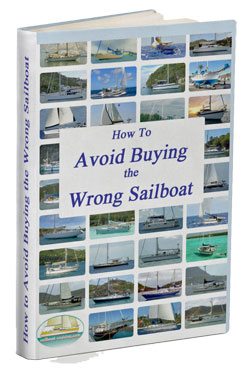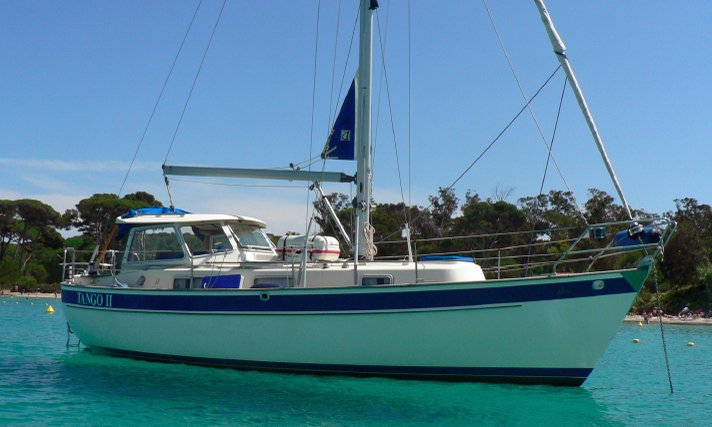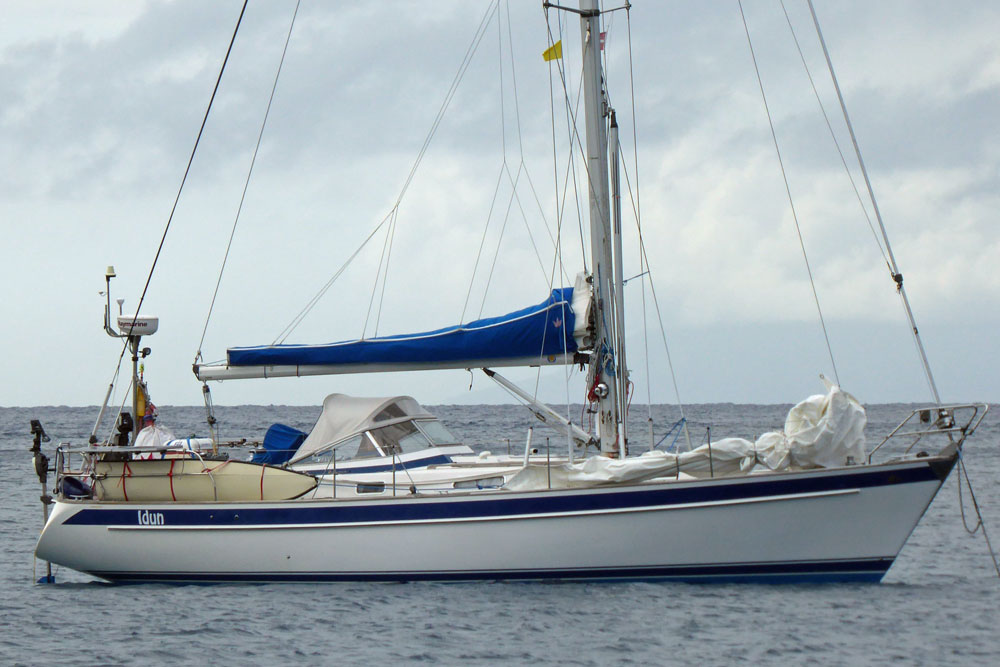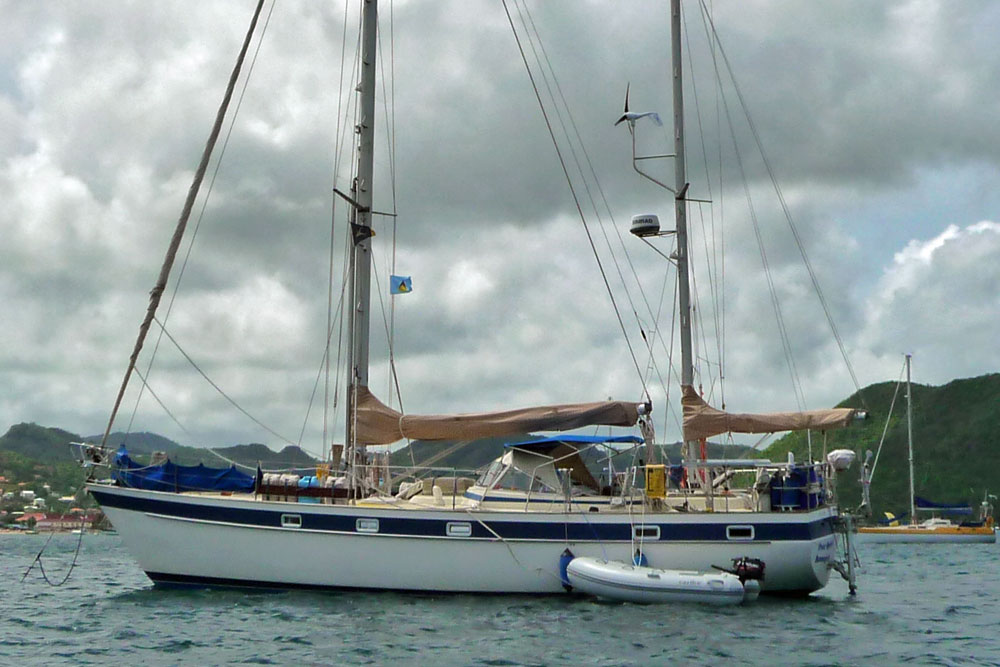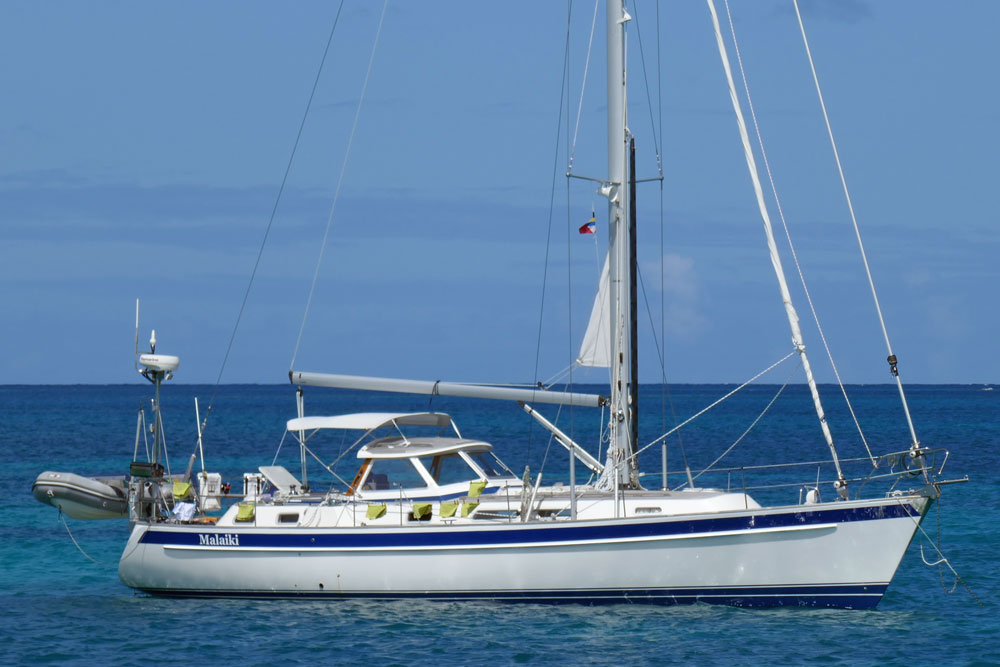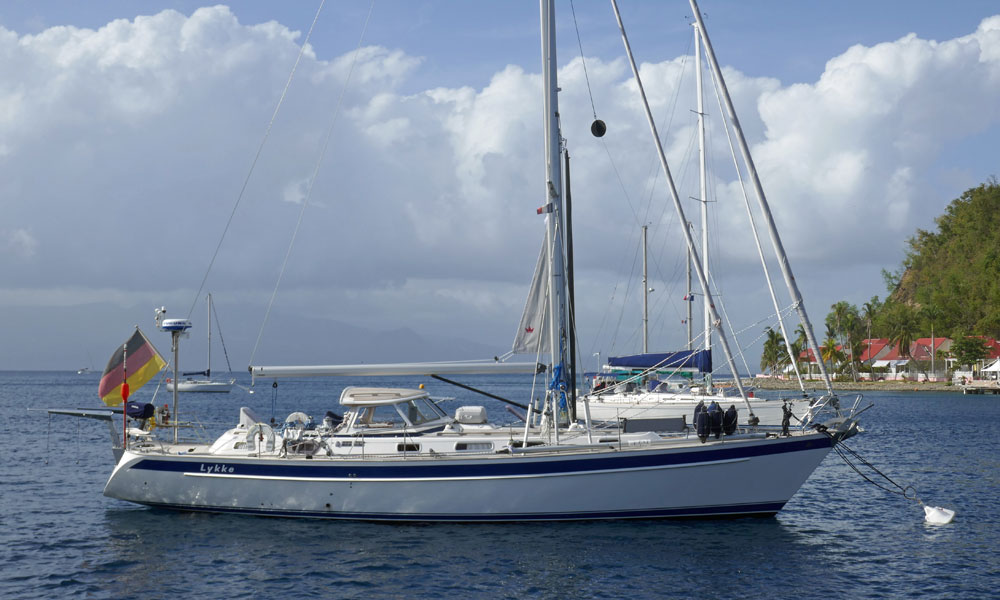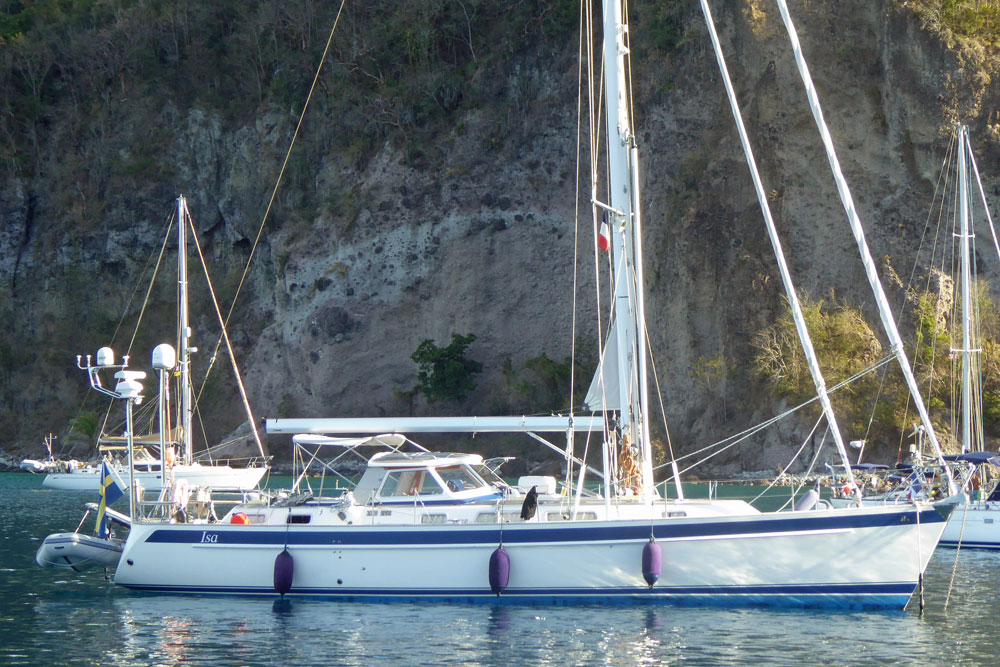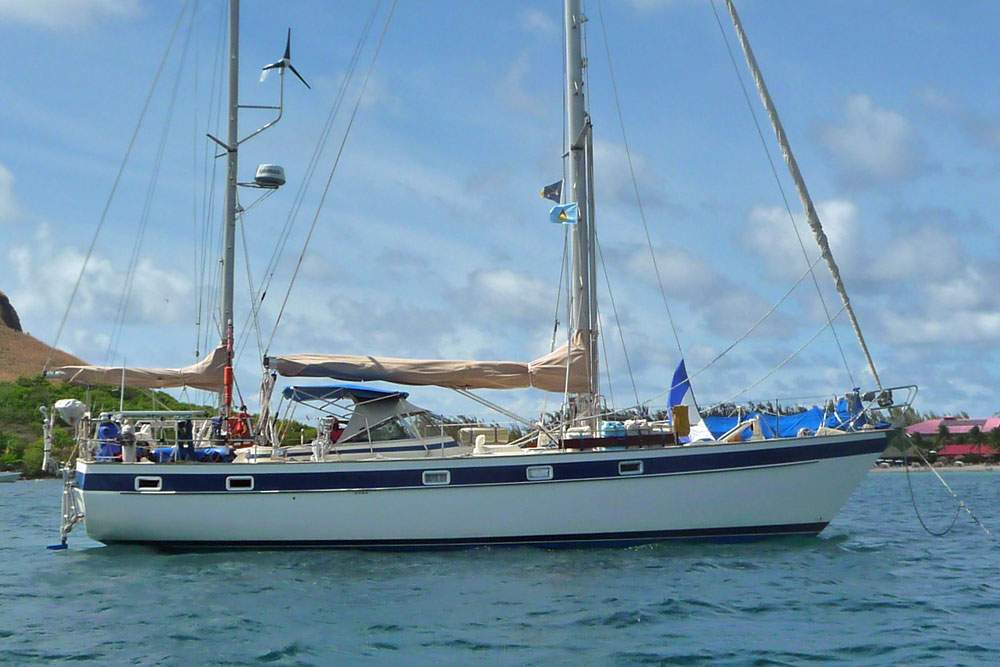- Home
- Cruising Yachts 40' to 45'
- Hallberg Rassy 42
The Hallberg Rassy 42 Sailboat
Specs & Key Performance Indicators
The Hallberg Rassy 42 (Frers), a Masthead sloop, was designed by German Frers and built in Sweden by Hallberg Rassy Yachts.
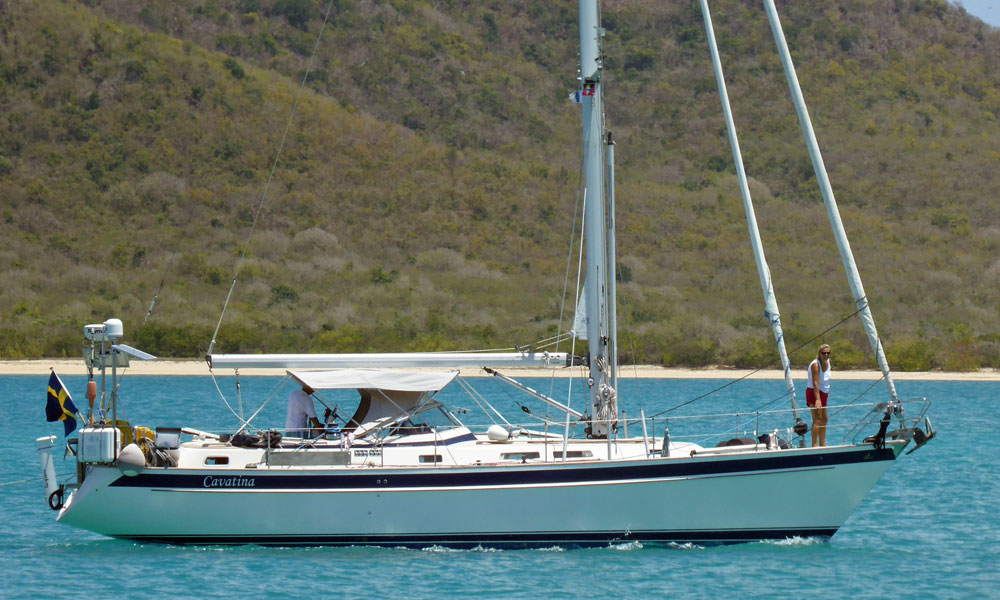 She looks like a cutter, but the inline stays converging at the masthead shows that this Hallberg-Rassy 42 'Cavatina' is a solent-rigged sloop.
She looks like a cutter, but the inline stays converging at the masthead shows that this Hallberg-Rassy 42 'Cavatina' is a solent-rigged sloop.Published Specification for the Hallberg Rassy 42 (Frers)
Underwater Profile: Fin keel and spade rudder
Hull Material: GRP (Fiberglass)
Length Overall: 43'4" (13.2m)
Waterline Length: 34'5" (10.5m)
Beam: 12'11" (3.9m)
Draft: 6'7" (2.0m)
Rig Type: Masthead Sloop
Displacement: 27,558lb (12,500kg)
Designer: German Frers
Builder: Hallberg-Rassy (Sweden)
Year First Built: 1991
Year Last Built: 2001
Number Built: 181
Owners Association: Hallberg-Rassy Owners Association
Published Design Ratios for the Hallberg Rassy 42 (Frers)
1. Sail Area/Displacement Ratio: 16.9
- Less than 16 would be considered under-powered;
- 16 to 20 would indicate reasonably good performance;
- Over 20 suggests relatively high performance.
2. Ballast/Displacement Ratio: 37.6
3. Displacement/Length Ratio: 314
- Under 100: Ultralight
- 100 to 200: Light
- 200 to 275: Moderate
- 275 to 350: Heavy
- Over 350: Ultraheavy
4. Comfort Ratio: 38.2
- Under 20 indicates a lightweight racing boat
- 20 to 30 indicates a coastal cruiser
- 30 to 40 indicates a moderate offshore cruising boat
- 40 to 50 indicates a heavy offshore boat
- Over 50 indicates an extremely heavy offshore boat
5. Capsize Screening Formula: 1.7
- Under 2.0 (the lower the better): Better suited for ocean passages
- Over 2.0: Less suited for ocean passages
Summary Analysis of the Design Ratios for the Hallberg Rassy 42 (Frers)
1. A Sail Area/Displacement Ratio of 16.9 suggests that the Hallberg Rassy 42 (Frers) will, in the right conditions, approach her maximum hull speed readily and satisfy the sailing performance expectations of most cruising sailors.
2. A Ballast/Displacement Ratio of 37.6 means that unless the bulk of the ballast is concentrated in a bulb at the foot of her keel, the Hallberg Rassy 42 (Frers) will have a tendency to heel excessively in a gust, and she'll need to be reefed early to keep her sailing upright in a moderate breeze.
3. A Displacement/Length Ratio of 314, tells us the Hallberg Rassy 42 (Frers) is clearly a heavy displacement cruising boat. You can load her down with all your cruising gear and equipment and it will hardly affect her waterline. Not an ideal choice for coastal sailing, but she'll come into her own on an offshore passage in testing conditions.
4. Ted Brewer's Comfort Ratio of 38.2 suggests that crew comfort of a Hallberg Rassy 42 (Frers) in a seaway is similar to what you would associate with the motion of a moderate bluewater cruising boat - a predictable and acceptable motion for most seasoned sailors.
5. The Capsize Screening Formula (CSF) of 1.7 tells us that a Hallberg Rassy 42 (Frers) would be a safer choice of sailboat for an ocean passage than one with a CSF of more than 2.0.
Other sailboats in the Hallberg-Rassy range include:
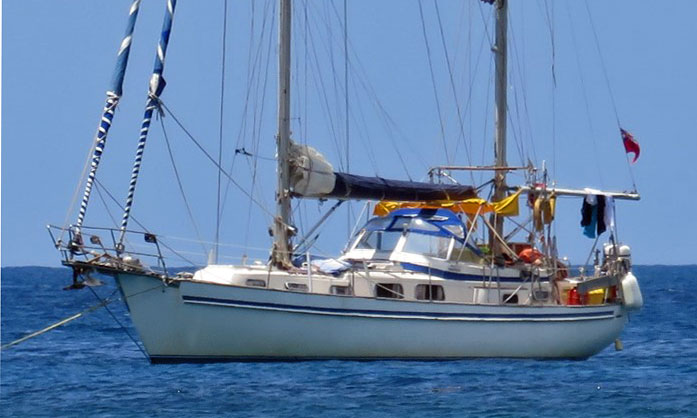 The Hallberg-Rassy 41
The Hallberg-Rassy 41Recent Articles
-
Albin Ballad Sailboat: Specs, Design, & Sailing Characteristics
Jul 09, 25 05:03 PM
Explore the Albin Ballad 30: detailed specs, design, sailing characteristics, and why this Swedish classic is a popular cruiser-racer. -
The Hinckley 48 Sailboat
Jul 09, 25 02:44 PM
Sailing characteristics & performance predictions, pics, specifications, dimensions and those all-important design ratios for the Hinckley 48 sailboat... -
The Hinckley Souwester 42 Sailboat
Jul 09, 25 02:05 PM
Sailing characteristics and performance predictions, pics, specifications, dimensions and those all-important design ratios for the Hinckley Souwester 42 sailboat...
